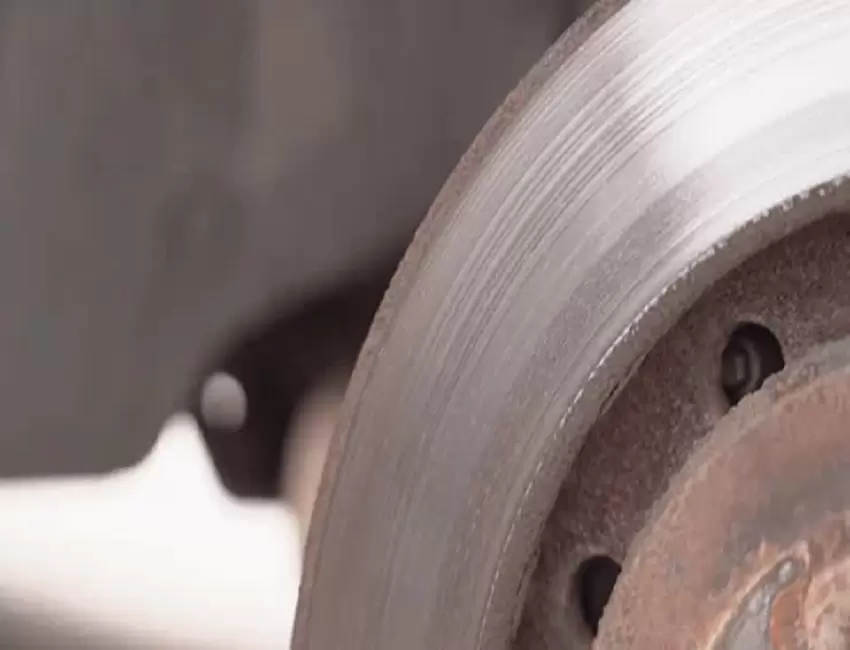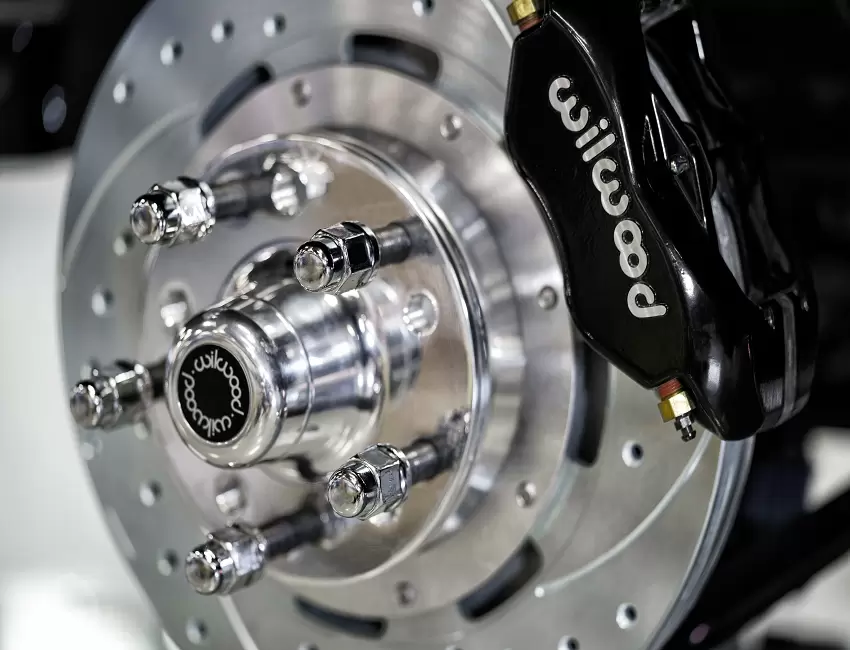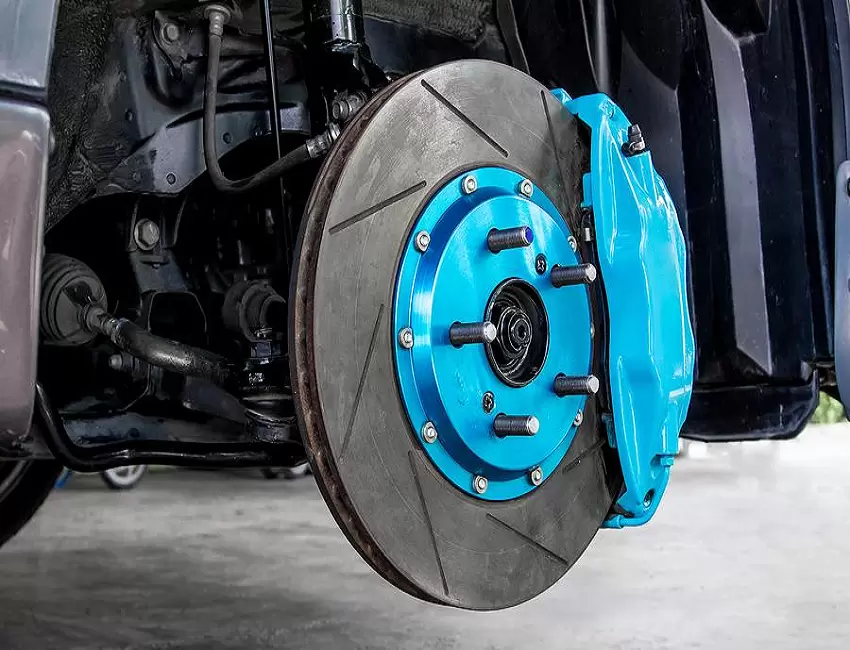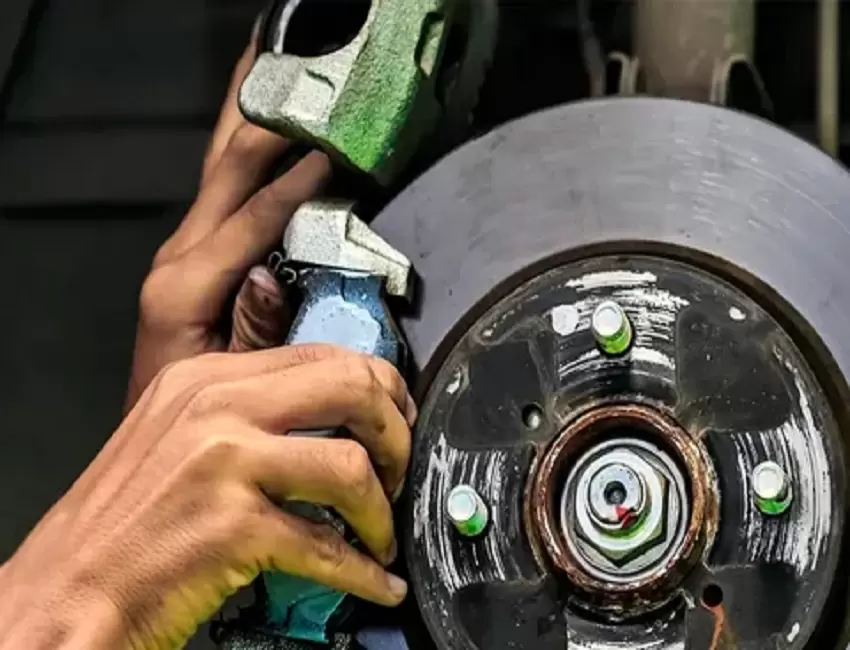As the temperature falls and Winter Can Affect Your Brakes snowflakes begin falling down few drivers think of one of their most critical components in the vehicle that need to receive adequate attention in winter season that is brakes.
The braking system of your vehicle can be destroyed by wintery conditions which may affect negatively on the icy roads thus compromising on personal safety in the same road conditions.
This comprehensive guide will help you understand how brakes are affected by winter and what you can do to guarantee their best performance while driving through the winter roads.
The Science of Cold and Your Brakes
That is why it is necessary to investigate the fundamental principles behind the effect of temperature on brake performance if you want to understand why it is difficult for brakes during wintertime.
When you step on the brake pedal, your car’s braking system converts kinetic energy (motion) into thermal energy (heat) due to friction. This process behaves differently in cold weather due to reasons given here:
Temperature’s Impact on Brake Performance
In extreme cold the materials in your braking system contract. This contraction can lead to several issues:
- Reduced flexibility in rubber components
- Elevated thickness of brake fluid
- Possible inappropriate positioning of brake pads and disc barkers.
These factors combine to create a perfect storm for compromised brake performance. In fact studies have shown that stopping distances can increase by up to 30% in cold weather conditions.
Materials at Play: Metal Contraction and Expansion
A car’s braking system is an elaborate combination of metal, rubber and fluid parts. Each of these materials reacts differently to temperature changes:
| Material | Cold Weather Effect |
| Metal | Contracts, potentially causing misalignment |
| Rubber | Becomes less flexible, may crack |
| Brake fluid | Increases in viscosity, flows less freely |
This interplay of materials under stress from cold temperatures can lead to a range of brake faults that we’ll explore in more detail.
Frozen Frustrations: When Brakes Stick
&Quot Friction braking system freeze up &Quot is one of the most frequent and irritating winter brake problems. Basically, it happens when water collects in brake pieces thus freezing them. As a result, pads sticks to discs or drums.
The ‘Glued On’ Brake Phenomenon Explained
Picture this: You’ve parked your car overnight in sub-zero temperatures. In the morning you start the engine put it in drive but the car won’t move. The wheels seem locked in place. What’s happening?
“Glued on brakes are like nature’s parking brake effective but not when you need to get moving.” Anonymous mechanic
On your last ride, heat from braking made water collect on brake parts. This water freezes when left in the cold overnight causing the brake pads to stick to rotors or drums.
Causes: Moisture and Corrosion
Two main factors contribute to glued on brakes:
- Moisture: Rain snow or even high humidity can introduce water into your braking system.
- Corrosion: Over time brake components can develop a layer of rust which exacerbates the sticking problem when combined with moisture.
How to Safely Unstick Frozen Brakes
If you find yourself with glued on brakes follow these steps:
- Don’t force it: Attempting to drive when brakes have frozen can result in a lot of damage.
- Warm up the car: This is in line with the assertion that: you can also find help in how long you should warm up your car in cold weather. Give the heater or engine oil enough time to circulate all over and take some heat from the car engine. After warming it up for 15 -20 minutes turn it off for a while and then restart the engine. Therefore, the heat produced by such processes will assist in melting ice on brake systems surfaces.
- Gently apply the brakes: While the automobile is operating, softly push and release the break pedal several times.
- Cautious movement: If the brakes feel free try moving the car slowly back and forth to ensure full release.
The Rusty Reality
The sinister death dealer of braking parts is defined by rust, which winter conditions hasten. In the presence of snow and hail moisture as well as the road salt mixture oxidation; this is what really happens.
Why Winter Accelerates Brake Rust

During winter your brakes are exposed to more moisture than usual due to:
- Melting snow and ice
- Increased humidity in the air
- Splashing from wet roads
Add to this the corrosive effects of road salt and you have a recipe for rapid rust formation.
Spotting Early Signs of Rust Damage
Keep an eye out for these indicators of rust on your brakes:
- Visual inspection: Look for reddish brown spots on rotors or drums
- Squealing or grinding noises: These can indicate that rust has formed on the surface of the rotors
- Pulsation in the brake pedal: This may suggest uneven rust build up on the rotors
Preventative Measures to Keep Rust at Bay
To combat rust formation:
- Regular washing: Rinse your car’s undercarriage thoroughly after driving on salted roads
- Dry brakes after washing: Take a short drive to heat up and dry the brakes
- Apply a rust inhibitor: Consider using a specialized product on exposed metal brake components
Wear and Tear in Winter
This means that cold weather has an impact not just on how well brakes work but also makes them wear out faster.
How Cold Weather Accelerates Brake Pad Wear
Due to decreased grip, people usually apply brakes more regularly and with greater force when driving on snow or ice roads. This increased use combined with the hardening of brake pad material in cold temperatures leads to faster wear.
The Impact on Rotors and Drums
Rotors and drums aren’t immune to winter’s effects either. Continual heating (from braking) and cooling (from cold air) can lead to thermal stress that could result into warping or cracking with time.
Signs of accelerated brake wear
Signs Your Brakes Are Wearing Faster Than Usual
Watch out for these indicators of accelerated brake wear:
- Increased stopping distance
- Brake pedal feels “softer” than usual
- Squealing or grinding noises when braking
- Vibration in the steering wheel when braking
Brake Lines: Winter’s Silent Victim
While often overlooked brake lines are critical components that can be severely affected by winter conditions.
Why Brake Lines Are Vulnerable in Cold Weather
In extremely cold weather, rubber brake lines might become hard and rigid. The hardening makes them vulnerable to breaking or splitting when in contact with road salts or other chemical agents.
Spotting Brake Line Damage
Look out for these signs of potential brake line issues:
- Soft or spongy brake pedal
- Visible cracks or corrosion on brake lines
- If you have seen bubbles of brake liquid beneath the stationary automobile that you own, then please know this;
The Importance of Regular Inspections
Regular checks are very vital due to the elusive characteristics of brake line failures. If you live in places where there are severe winters, it is advisable that a qualified expert inspects your brake pipes every winter.
The Salt Factor
Road salt is a two edged sword: it helps in melting ice and improving traction but it is also highly corrosive to the elements of your car including brakes.
How Road Salt Corrodes Brake Components

Salt accelerates the oxidation process leading to faster rust formation on metal brake parts. It can also degrade rubber components, potentially causing leaks in brake lines or calipers.
Long-term Effects of Salt Exposure
Prolonged exposure to road salt can lead to:
- Premature wear of brake pads and rotors
- Weakening of brake lines and hoses
- Corrosion of calipers and other metal components
Proper Cleaning Techniques to Minimize Damage
To mitigate salt damage:
- Wash your car regularly paying special attention to the undercarriage
- Use a neutralizing agent after washing to counteract any remaining salt
- Apply a protective coating to exposed metal components before winter begins
Moisture: The Invisible Enemy
Moisture might just be the most subtle danger to your brakes in winter. It can seep into different components of your brake system leading to several complications.
How Condensation Forms in Your Brake System
The brake lines and other parts of your vehicle can have a condensation of moisture as temperatures vary. The hydraulic fluid may incorporate this fluid bathroom in the brake fluid reservoir of great concern.
The Dangers of Frozen Brake Fluid
Brake fluid happens to be one of those hygroscopic substances, this implies that it absorbs moisture from the atmosphere. In extreme cold conditions, this absorbed moisture can freeze leading to:
- Blockages in brake lines
- Reduced hydraulic pressure
- Complete brake failure in severe cases
Why Regular Brake Fluid Changes Matter More in Winter
To combat moisture buildup:
- Every couple of years or 30 000 miles, whichever comes first, change the brake oil.
- Always use high quality DOT 4 or DOT 5.1 liquid for brakes because they are characterized by lower freezing points.
- The storage tank for your brake fluid should be tightly closed in order to limit its moisture intake.
Winter Driving Techniques for Brake Preservation
Adapting your driving style can significantly reduce wear on your brakes during winter months.
The Art of Gentle Braking in Icy Conditions
When driving conditions are slippery:
- Anticipate stops early and brake gently
- Use a light pumping action on non-ABS brakes to prevent lockup
- Allow ABS to do its job without pumping if your car is equipped
Using Engine Braking to Reduce Wear
Engine braking involves downshifting to slow your vehicle without using the brakes. This technique:
- Reduces wear on brake components
- Helps maintain control on slippery surfaces
- Can be particularly effective when descending hills
The Importance of Maintaining Safe Distances
Increase your following distance in winter conditions. This extra space:
- Gives you more time to react to hazards
- Reduces the need for sudden hard braking
- Minimizes the risk of rear end collisions on slippery roads
Winterizing Your Brakes: A Comprehensive Guide
Having your brakes ready for winter is very essential as it contributes towards having safe experience while driving during this season. A detailed guide has been given on how to make sure that your brakes are winter-ready.
Pre-winter Brake Inspection Checklist
Before the first snowfall have a professional check:
- Brake pad thickness (should be at least 3mm)
- Rotor condition (look for scoring or uneven wear)
- Brake fluid level and quality
- Brake line integrity
- Caliper operation
Choosing the Right Brake Components for Cold Climates
Consider upgrading to:
- Ceramic brake pads which perform better in cold weather
- Slotted or drilled rotors for improved heat dissipation
- Stainless steel braided brake lines for better durability
The Debate: All-season vs. Winter-specific Brake Pads
| All-season Pads | Winter-specific Pads |
| Good performance year-round | Optimized for cold weather |
| More economical | Better stopping power in snow and ice |
| May wear faster in extreme conditions | Can be noisy in warmer weather |
When to Seek Professional Help
While at home some maintenance of brakes can be done, certain problems need professional attention.
Warning Signs You Shouldn’t Ignore
Request for fast expert guidance if you notice the following:
- Brake pedal goes to the floor
- Grinding or squealing noises when braking
- Car pulls to one side when braking
- Brake warning light comes on
DIY Brake Maintenance vs. Professional Servicing
| DIY Tasks | Professional Tasks |
| Visual inspections | Brake fluid replacement |
| Brake pad replacement (with proper tools and knowledge) | Rotor resurfacing or replacement |
| Cleaning and lubricating caliper slides | Brake line repair or replacement |
Finding a Trusted Mechanic for Winter Brake Care
To find a reliable mechanic for your winter brake care:
- Ask for recommendations from friends or family
- Check online reviews and ratings
- Inquire about ASE (Automotive Service Excellence) credentials
- Seek information concerning their past experiences in dealing with brake problems specific to winter
FAQ: Winter Can Affect Your Brakes
Q: Can extreme cold cause brake failure?
A: While rare extreme cold can cause brake fluid to freeze if contaminated with moisture. This may lead to reduced brake performance or failure. The change of brake fluids and their inspection periodically would help in the avoidance of such kind of circumstances that could be fatal.
Q: How often should I have my brakes checked in winter?
A: Prior to the onset of winter, it’s prudent to get your brakes checked and do so again halfway through. This helps catch any cold weather related issues early. Pay attention to unusual sounds or changes in braking performance between checks.
Q: Are winter-specific brake pads worth the investment?
A: Winter-specific brake pads can provide better stopping power in cold snowy conditions. However they may wear faster in warmer weather. For most drivers high quality all-season pads with regular maintenance offer sufficient year round performance.
Conclusion:
As we’ve explored winter poses unique challenges to your vehicle’s braking system. From the science of how cold affects brake performance to the practical steps you can take to protect your brakes understanding these factors is crucial for safe winter driving.
Remember proactive maintenance is key. Periodic monitoring and appropriation of fluid modifications at this timing alongside driving style adjustments can be very helpful in conserving the brakes enabling them to work just when required.
No one should have an overly anxious time behind the wheel during winter. With proper care given to your braking system, icy roads will no longer intimidate you since you know its stopping ability will always be there.
Be careful and let your braking system be everything to you while in winter by following all rules of care; it shall surely take care of you during a rough patch on road condition changes.

With over 5 years of dedicated experience in the automotive industry, I am passionate about all things automotive. My journey began with a deep curiosity for automobiles, which led me to delve deeper into their mechanics, technology and trends. My expertise spans various aspects of the automotive world, from the latest electric vehicles to classic car restoration techniques. Through my articles, I aim to share my knowledge and insights, helping readers stay informed and inspired in the fast-paced world of the automobile.












